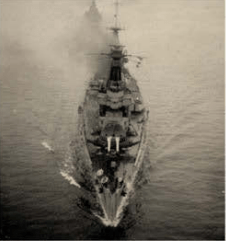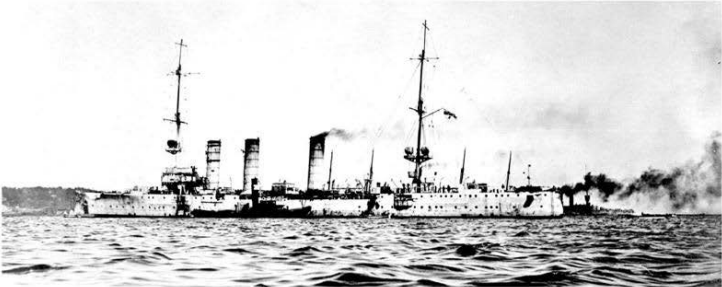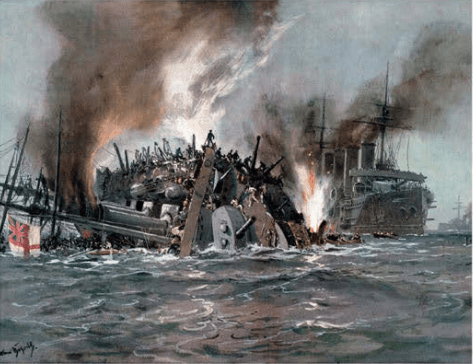THE WAR AT SEA
The North Sea, Adriatic and Mediterranean
The Royal Navy (RN) of Britain had ruled the seas for almost a century in 1914. At the beginning of the war, the Navy’s traditional strategy had swung into place. Germany was blockaded to prevent goods getting in or out of enemy territory. Weapons and food were among the contraband that was taken from ships sailing toward neutral or hostile ports. The British officially declared the North Sea a war zone in November 1914 and issued a warning to any ships that dared to enter there. The French navy mounted a similar blockade of Austro-Hungarian ports in the Adriatic.
In the maritime war, the British did not have the upper hand, even if the blockade eventually proved to be a crucial element in the Allies’ victory. Two German cruisers, Goeben and Breslau, managed to get away from the Royal Navy in the Mediterranean in August 1914 and made their way to Constantinople, where they helped to enlist the Ottoman Empire in the war. On 28 August, three German light cruisers were sunk off the German island of Heligoland, but among the embarrassing British naval losses were the antiquated cruisers Aboukir, Hogue and Cressy, torpedoed off the coast of the Netherlands on 22 September.


Coronel, Falklands, Dresden: Key British Victories over Germany at Sea
Admiral Prince Louis of Battenberg was driven from his post as commander of the Royal Navy and replaced by the seasoned Admiral “Jacky” Fisher, in part due to these defeats but also to anti-German sentiment. However, worse humiliation was to come as German battlecruisers bombed three cities on England’s east coast on December 16. With the help of the Royal Australian Navy and the navy of Japan, an ally of Britain, the Royal Navy cleared German commerce and naval vessels all over the world, cutting them off from their home country and preventing them from breaking through the British blockade.
Admiral von Spee’s Pacific Squadron was one such force that successfully targeted Allied commerce; on November 1st, Spee annihilated a weaker British force off Coronel, Chile. Vengeance was swift. At the Battle of the Falkland Islands (8 December 1914) Admiral Sturdee, reinforced with two state-of-the-art battlecruisers, destroyed all but one of von Spee’s ships. The single escapee, the cruiser Dresden, was tracked down and sunk in March 1915.

The Battle of Dogger Bank
The main focus of the war at sea in 1915 was the submarine war and the struggle at the Dardanelles, but there was one major clash between surface fleets. On 24 January, Admiral von Igenohl sent four armoured cruisers, supported by two flotillas of torpedo boats out on a raid into the North Sea. With his battlecruisers, the ever-aggressive Admiral Sir David Beatty assaulted the German force off Dogger Bank and sank the armoured cruiser Blücher. Igenohl was replaced as commander of the High Seas Fleet by a more cautious admiral, von Pohl. For over a year, the two battle-fleets eyed each other warily, until in May 1916 the long awaited major battle took place, off Jutland.

Originally posted 2023-11-03 11:08:37.




